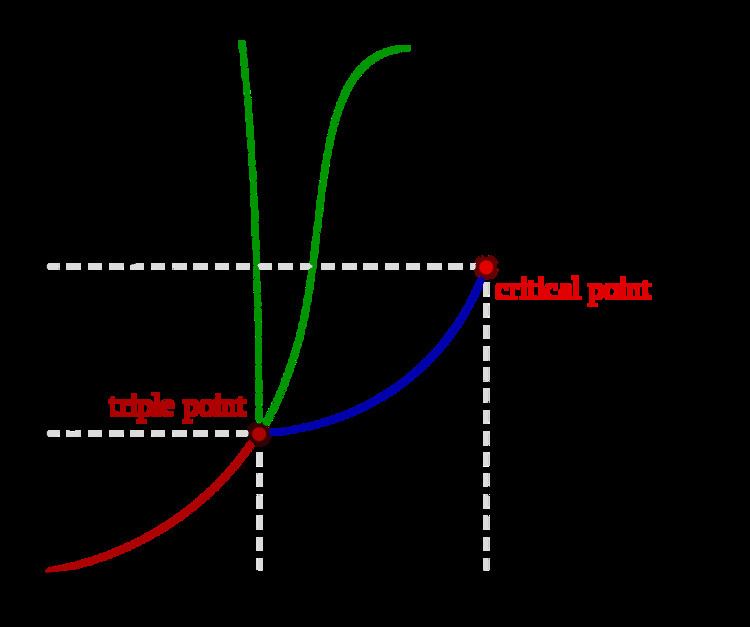 | ||
The Clausius–Clapeyron relation, named after Rudolf Clausius and Benoît Paul Émile Clapeyron, is a way of characterizing a discontinuous phase transition between two phases of matter of a single constituent. On a pressure–temperature (P–T) diagram, the line separating the two phases is known as the coexistence curve. The Clausius–Clapeyron relation gives the slope of the tangents to this curve. Mathematically,
Contents
- Derivation from state postulate
- Derivation from GibbsDuhem relation
- Ideal gas approximation at low temperatures
- Chemistry and chemical engineering
- Meteorology and climatology
- Example
- Second derivative
- References
where
Derivation from state postulate
Using the state postulate, take the specific entropy
The Clausius–Clapeyron relation characterizes behavior of a closed system during a phase change, during which temperature and pressure are constant by definition. Therefore,
Using the appropriate Maxwell relation gives
where
and the total derivative of pressure with respect to temperature may be factored out when integrating from an initial phase
where
where
Given constant pressure and temperature (during a phase change), we obtain
Substituting the definition of specific latent heat
Substituting this result into the pressure derivative given above (
This result (also known as the Clapeyron equation) equates the slope of the tangent to the coexistence curve
Derivation from Gibbs–Duhem relation
Suppose two phases,
Furthermore, along the coexistence curve,
One may therefore use the Gibbs–Duhem relation
(where
Rearrangement gives
from which the derivation of the Clapeyron equation continues as in the previous section.
Ideal gas approximation at low temperatures
When the phase transition of a substance is between a gas phase and a condensed phase (liquid or solid), and occurs at temperatures much lower than the critical temperature of that substance, the specific volume of the gas phase
at low temperatures. If pressure is also low, the gas may be approximated by the ideal gas law, so that
where
we can obtain the Clausius–Clapeyron equation
for low temperatures and pressures, where
Let
or
These last equations are useful because they relate equilibrium or saturation vapor pressure and temperature to the latent heat of the phase change, without requiring specific volume data.
Chemistry and chemical engineering
For transitions between a gas and a condensed phase with the approximations described above, the expression may be rewritten as
where
Meteorology and climatology
Atmospheric water vapor drives many important meteorologic phenomena (notably precipitation), motivating interest in its dynamics. The Clausius–Clapeyron equation for water vapor under typical atmospheric conditions (near standard temperature and pressure) is
where:
The temperature dependence of the latent heat
(This is also sometimes called the Magnus or Magnus-Tetens approximation, though this attribution is historically inaccurate.)
Under typical atmospheric conditions, the denominator of the exponent depends weakly on
Example
One of the uses of this equation is to determine if a phase transition will occur in a given situation. Consider the question of how much pressure is needed to melt ice at a temperature
and substituting in
we obtain
To provide a rough example of how much pressure this is, to melt ice at −7 °C (the temperature many ice skating rinks are set at) would require balancing a small car (mass = 1000 kg) on a thimble (area = 1 cm²).
Second derivative
While the Clausius–Clapeyron relation gives the slope of the coexistence curve, it does not provide any information about its curvature or second derivative. The second derivative of the coexistence curve of phases 1 and 2 is given by
where subscripts 1 and 2 denote the different phases,
